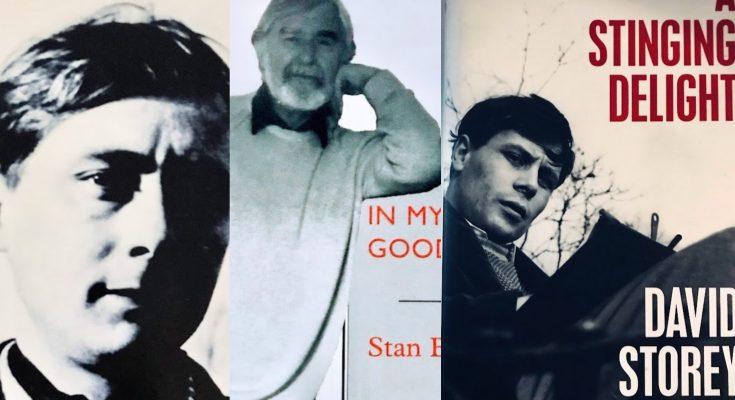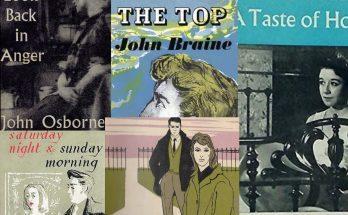The Angry Young Men Movement
The phrase coined “Angry Young Men” refers to a group of British writers and playwrights who arose in the 1950s and early 1960s.
These writers were known for their anti-establishment and calcitrant attitudes. Their rebellious attitudes were conveyed in their works. These works analysed and challenged the cultural, political and social norms that arose after World War II in Britain. The “Angry Young Men movement” desired to question the existing conditions and structures within society due to their common sense of disillusionment. Some of the themes that overlap in the literature of the Angry Young Men are :
Characteristics of The Angry Young Man Movement :
Their Working-Class Viewpoints :
Many of the writers that come under the umbrella term of the “Angry Young Men movement” originated from working-class backgrounds and areas. Equally the characters they discuss within their literature are from very similar socioeconomic backgrounds. Their writing represent the hardships, dissatisfaction and additionally the aspirations of the working-class. For example the main character, Jimmy Porter, from John Osborne‘s play “Look Back in Anger” (1956), who displays a deep discontent with his life.

Anti-Establishment :
The “Angry Young Men” were critical of the establishment and the traditional British class system. The writers of the “Angry Young Men movement” challenged what society stereotypes as social norms. Drawing attention to the questioning of upper-class authorities and institutions. Thus being critiques of not only the establishment but also the hierarchy of the the British class system. This is evident from the behaviour of the rebellious Arthur Seaton. Arthur is the central focus and main character from “Saturday Night and Sunday Morning” (1958) by Alan Sillitoe.

Social Realism:
The Angry Young Men writers adopted social realism by aiming to illustrate the rough and gritty portrait of everyday life. Resulting in their portrayal of credible stories.
This includes issues such as class inequality, economic and financial struggles, and the impact of societal expectations. Shelagh Delaney whose play “A Taste of Honey” (1958) is a perfect example of the social realism it depicts. It is set in the working-class area of Salford, a district of Greater Manchester. The central character Jo and her mother Helen, and later Jo’s friend Geoffrey, live in the least luxurious of lodgings.
Rejection of Traditional Conventions :
The movement shunned the traditional and sometimes idealist literature of the time. Alternately, these writers sought to outline the current issues at that time. This led to a more honest representation of the areas that they originated from and they lived in. A key example being the character of Vic Brown from “A Kind Of Loving” by Stan Barstow (1960). It examines and equally illustrates societal expectations of unplanned pregnancy.

The Prominent Playwrights & Novelists of The Angry Young Men Movement
Whilst not exhaustive, some of the following authors and playwrights are highlighted in the list below. Included are some of their prominent works. These works are classed as part as the of the “Angry Young Men” movement.
- Kingsley Amis : Sir Kingsley Amis, renown for his works include his satirical novel “Lucky Jim” (1954). The leading character is university lecturer, Jim Dixon, who despises the pretentiousness of academic life.
- Shelagh Delaney : Although female, Shelagh’s play, A Taste Of Honey (1956) is one of the most popular works of the movement.
- John Osborne : “Look Back in Anger” (1956), the play is considered a seminal work and the beginning of the “Angry Young Men movement”.
- Colin Wilson : Colin’s sensational philosophical work “The Outsider” (1956) influenced the Angry Young Men.
- John Braine : “Room at the Top” (1957), the novel written by John whilst he was a librarian, delves into class dynamics and upward social mobility.
- Alan Sillitoe : Known for his influential novels “Saturday Night and Sunday Morning” (1958) and “The Loneliness of the Long Distance Runner” (1959).
- David Storey : “This Sporting Life” (1960), David’s first novel and further works like “Flight Into Camden” (1961) are participants in the movement.
- Stan Barstow : “A Kind of Loving” (1960) by Stan Barstow focuses on the character Vic Brown and his working class background. Set in the fictional industrial Yorkshire town of Cressley, it examines societal expectations.
- Keith Waterhouse : “Billy Liar” (1963), the satirical novel based on the central character Billy Fisher and his mundane existence in the fictional town of Stradhoughton in post war Britain.
© 2024 – 2025, Jayne Thomas. All rights reserved.
Follow me :



